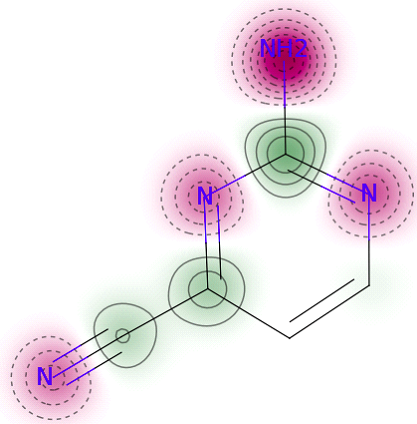PennyLane and Pytorch implementation of QGAN-HG: Quantum generative models for small molecule drug discovery, based on MolGAN (https://arxiv.org/abs/1805.11973)
This library refers to the following source code.
For details see Quantum Generative Models for Small Molecule Drug Discovery by Junde Li, Rasit Topaloglu, and Swaroop Ghosh.
- python>=3.5
- pytorch>=0.4.1: https://pytorch.org
- rdkit: https://www.rdkit.org
- pennylane
- tensorflow==1.15
- frechetdist
- data: should contain your datasets. If you run
download_dataset.shthe script will download the dataset used for the paper (then you should rundata/sparse_molecular_dataset.pyto conver the dataset in a graph format used by MolGAN models). - models: Class for Models.
python main.py --quantum True --layer 2 --qubits 10 --complexity 'hr'
If you want to run classical MolGAN, please set quantum argument to False. But you can still train reduced models by setting complexity to 'hr'-highly reduced (around 2% of original generator papameters), 'mr'-moderately reduced (around 15%), or 'nr'-no reduce. Layer and qubits can adjust expressive power of variational quantum circuit.
python p2_qgan_hg.py
Run 'p2_qgan_hg'.py or 'p4_qgan_hg.py' for implementing patched quantum GAN with hybrid generator for 2 pathes and 4 patches, respectively.
You can see generated small molecules with pretrined models which are included in qgan-hg/models. Quantum circuit parameters are shown in gen_weights.csv. Inference can be done on either PennyLane quantum simulator or real IBM quantum computers.
qgan-hg-demo.ipynb
Below are some generated molecules:
@ARTICLE{2021arXiv210103438L,
author = {{Li}, Junde and {Topaloglu}, Rasit and {Ghosh}, Swaroop},
title = "{Quantum Generative Models for Small Molecule Drug Discovery}",
journal = {arXiv e-prints},
keywords = {Computer Science - Emerging Technologies, Computer Science - Machine Learning, Quantum Physics},
year = 2021,
month = jan,
eid = {arXiv:2101.03438},
pages = {arXiv:2101.03438},
archivePrefix = {arXiv},
eprint = {2101.03438},
primaryClass = {cs.ET},
adsurl = {https://ui.adsabs.harvard.edu/abs/2021arXiv210103438L},
adsnote = {Provided by the SAO/NASA Astrophysics Data System}
}

